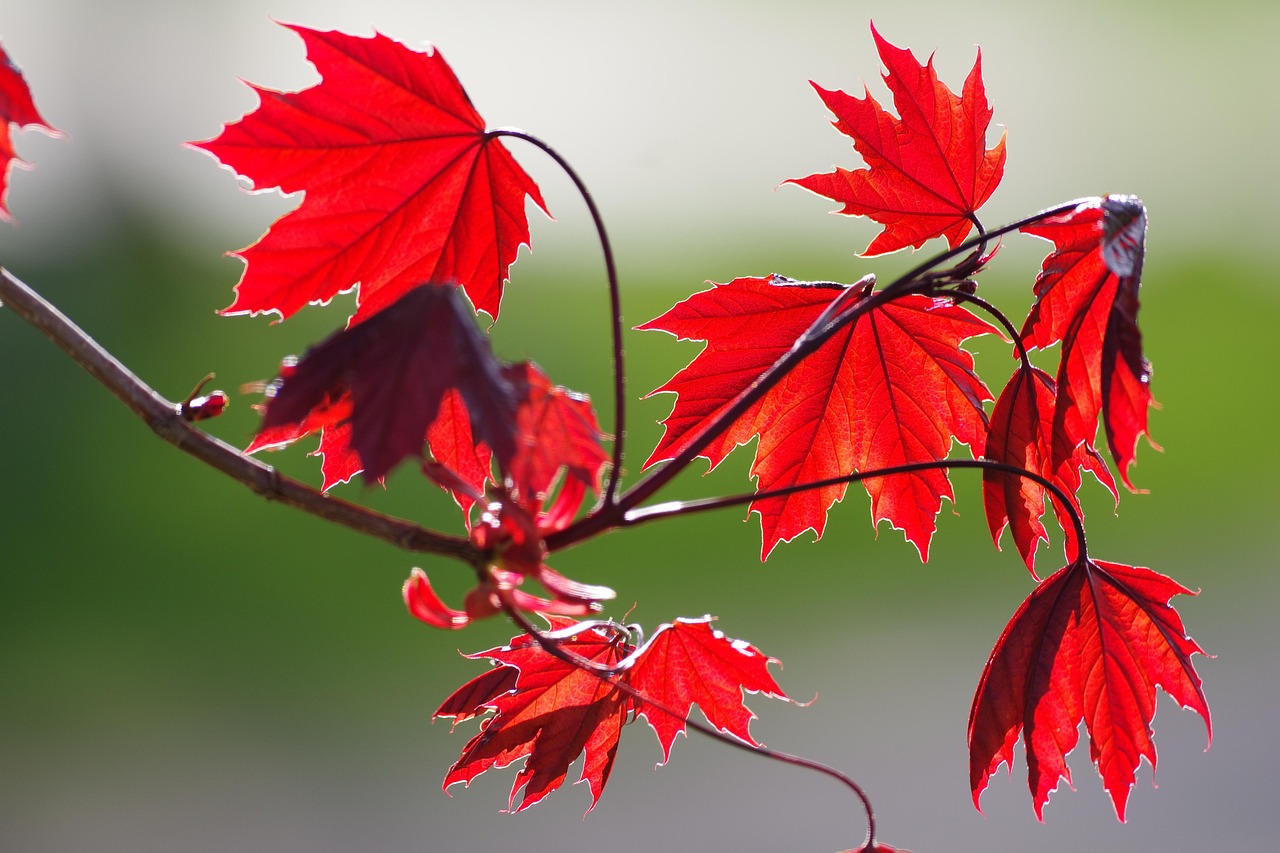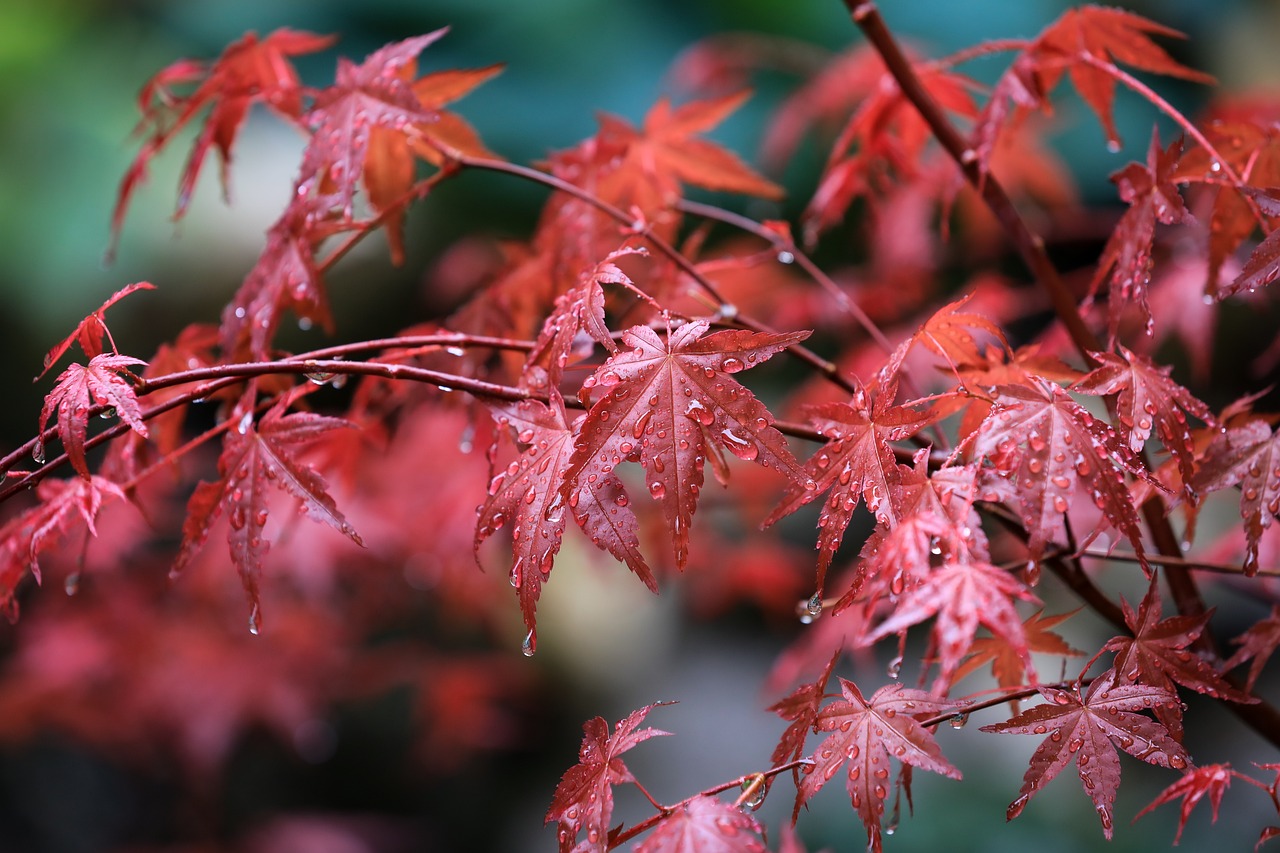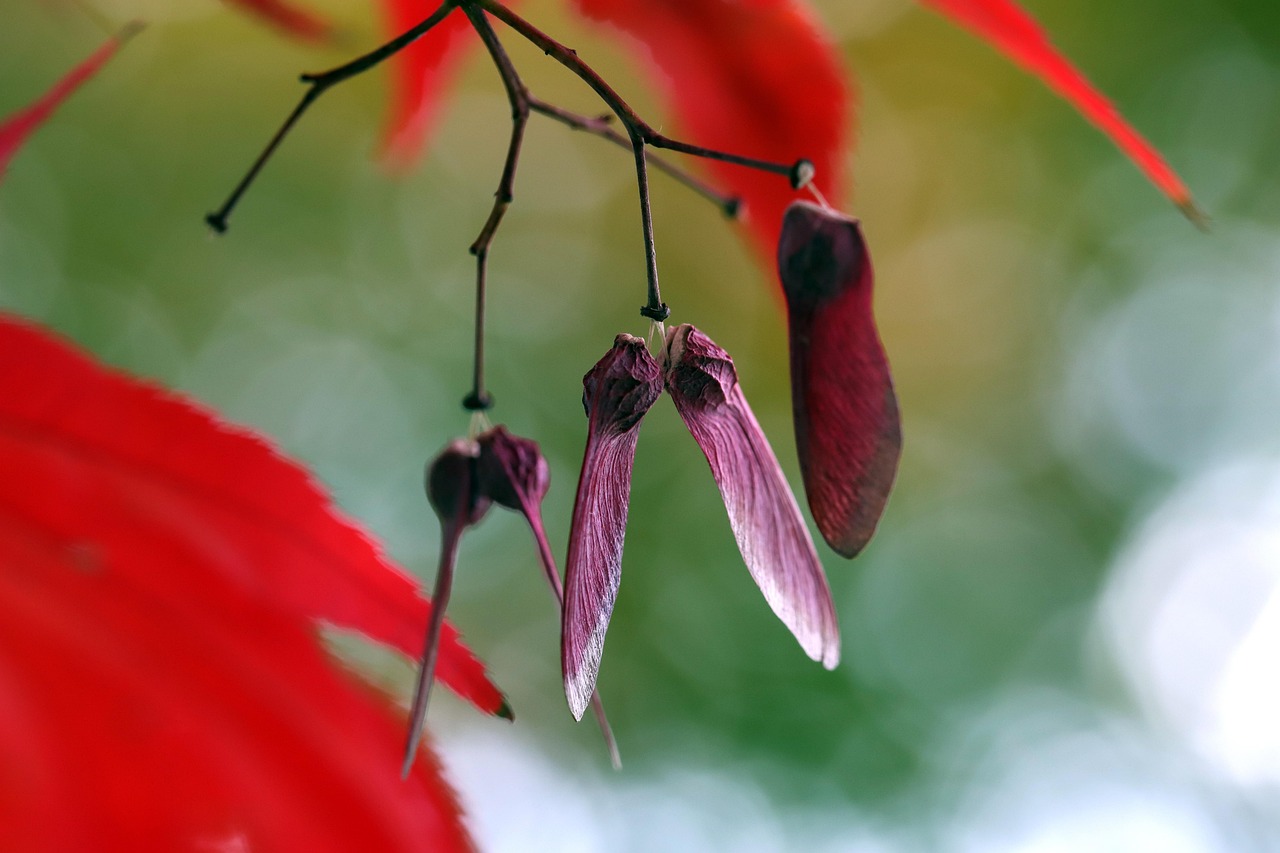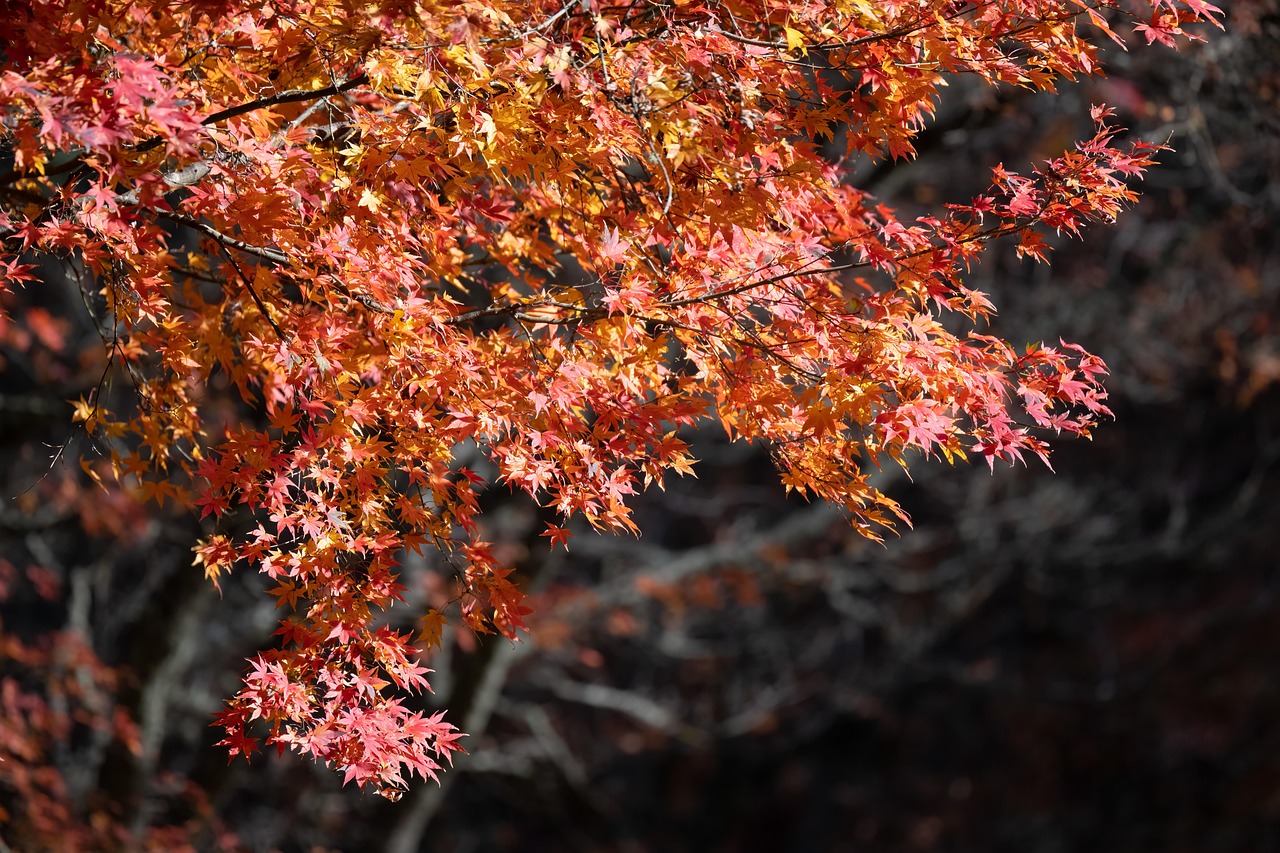Red Maple is considered good firewood due to its decent heat output and relatively low smoke production. It burns well when properly seasoned, making it a popular choice among those seeking an efficient and environmentally friendly wood for their fireplaces and wood stoves.
Firewood selection plays a critical role in the efficiency and environmental impact of heating a home. Among various types of wood available, Red Maple stands out for its unique properties. Known for its vibrant fall foliage, Red Maple (Acer rubrum) is not only appreciated for its aesthetic value but also for its practicality as firewood.
One of the essential aspects to consider when evaluating firewood is its burning qualities. These qualities include heat output, burn duration, and smoke production. Different wood species have varying characteristics, making some more suitable for burning than others. In this article, we will explore the specific burning qualities of Red Maple and how it compares to other types of firewood.
Understanding Red Maple Firewood

Red Maple is a hardwood species that grows throughout North America. It thrives in diverse environments, making it widely available. This wood has several features that contribute to its effectiveness as firewood:
- Density: Red Maple has a moderate density, which allows it to produce a good amount of heat when burned.
- Sparking: Compared to softer woods, Red Maple produces minimal sparks, making it safer for indoor use.
- Seasoning: Properly seasoned Red Maple can enhance its burning qualities, leading to a more efficient and cleaner burn.
When properly seasoned, Red Maple can be an excellent choice for both new and experienced firewood users. Seasoning refers to the process of drying the wood to reduce moisture content, which is crucial for efficient burning. Freshly cut wood can contain too much moisture, making it difficult to ignite and leading to excessive smoke production.
Burning Qualities of Red Maple
The burning qualities of Red Maple can be assessed based on several factors, including heat output and burn characteristics. Below are some key metrics that illustrate these qualities:
| Quality | Description |
|---|---|
| BTU Rating | Red Maple typically has a BTU rating of around 20 million BTUs per cord when adequately seasoned. |
| Burn Duration | This wood burns for a moderate duration, making it suitable for both quick fires and longer-lasting heat. |
| Soot Production | Red Maple produces less soot than many other hardwoods, resulting in cleaner chimneys and less maintenance. |
The BTU rating indicates the amount of energy produced when the wood is burned. A higher BTU rating means more heat output. Red Maple’s BTU rating places it in a favorable position compared to many other hardwoods, making it an effective option for heating purposes. Additionally, its burn duration allows users to enjoy warmth for extended periods without needing to constantly add more wood.
Another important characteristic of firewood is the amount of smoke produced during combustion. Red Maple’s relatively low smoke output makes it an appealing choice for indoor fireplaces and stoves. Minimizing smoke not only enhances air quality but also reduces the chances of creosote buildup in chimneys.
While Red Maple offers several advantages as firewood, it is essential to ensure that the wood is properly seasoned before use. Seasoning can take anywhere from six months to a year, depending on environmental conditions and the initial moisture content of the wood. Properly seasoned wood will have a moisture content below 20%, which is ideal for efficient burning.
In comparison with other types of hardwoods like Oak or Hickory, Red Maple is often more accessible and easier to season. While Oak may provide slightly higher BTU ratings, Red Maple remains a strong contender due to its availability and overall performance in various burning scenarios.
Conclusion
Overall, Red Maple serves as an excellent choice for firewood due to its favorable burning qualities. With proper seasoning and care, it can provide reliable heat and minimal smoke for your home heating needs.
Comparing Red Maple to Other Firewood Options
When choosing firewood, it’s crucial to compare various types to find the best fit for your needs. Red Maple is often compared with other popular hardwoods such as Oak, Birch, and Hickory. Each type of wood has its unique characteristics that affect burning qualities, availability, and ease of use. Understanding these differences can help you make an informed decision.
Red Maple vs. Oak
Oak is widely regarded as one of the best firewood options due to its high heat output and long burn time. However, it has some differences when compared to Red Maple:
- Heat Output: Oak typically has a BTU rating of around 24 million BTUs per cord, which is higher than Red Maple. This makes Oak an excellent choice for those seeking maximum heat.
- Burn Duration: Oak burns longer than Red Maple, providing sustained heat for extended periods. This can be beneficial for long winter nights.
- Seasoning Time: Oak requires more time to season than Red Maple. It often needs a year or more to reach ideal moisture content.
Despite its advantages, Oak can be more challenging to handle due to its density and weight. Additionally, Oak may not be as readily available as Red Maple in certain regions.
Red Maple vs. Birch
Birch is another popular choice for firewood. It burns quickly and produces a bright flame, making it visually appealing. Here’s how Birch compares to Red Maple:
- Heat Output: Birch has a BTU rating of approximately 20 million BTUs per cord, similar to Red Maple. This makes both woods comparable in heat production.
- Burn Rate: Birch tends to burn faster than Red Maple, making it suitable for quick fires but less ideal for long-lasting heat.
- Seasoning Time: Birch also seasons relatively quickly, similar to Red Maple. It can be ready for burning in about six months.
While Birch offers a bright flame and quick ignition, it may not provide the same duration of heat that Red Maple does. This makes Red Maple a more versatile option for varied heating needs.
Red Maple vs. Hickory
Hickory is often considered the gold standard for firewood due to its exceptional heat output and flavor when used for smoking meats. Here’s how it stacks up against Red Maple:
- Heat Output: Hickory has a BTU rating that can exceed 27 million BTUs per cord, making it one of the highest among firewood options.
- Burn Duration: Hickory also provides a long burn time, which can be advantageous for prolonged heating requirements.
- Sparking: Hickory tends to produce more sparks compared to Red Maple, which may not be ideal for indoor use.
Although Hickory offers superior heat output, it is often more challenging to find and may be pricier than Red Maple. Its unique flavor also makes it a preferred choice for barbecuing, while Red Maple excels in general heating applications.
The Environmental Impact of Using Red Maple Firewood
Using firewood like Red Maple can have both positive and negative environmental impacts. It’s essential to consider these factors when choosing your heating source.
Positive Impacts
- Renewable Resource: Firewood is a renewable energy source as long as trees are harvested sustainably. Red Maple can be replaced through responsible forestry practices.
- Carbon Neutrality: Burning wood releases carbon dioxide; however, it is generally considered carbon neutral because the trees absorb CO2 during their growth.
- Lower Carbon Footprint: Using local firewood like Red Maple reduces transportation emissions compared to fossil fuels or imported wood.
Negative Impacts
- Deforestation: Unsustainable logging can lead to deforestation, harming ecosystems and reducing biodiversity.
- Air Quality: Burning wood can produce particulate matter and other pollutants that may affect air quality, particularly in densely populated areas.
- Pests and Diseases: Transporting firewood can spread invasive species and diseases that threaten local forests.
To mitigate the negative impacts, it is crucial to source firewood responsibly and ensure it is purchased from local suppliers who practice sustainable harvesting methods. Using seasoned firewood further contributes to reducing smoke emissions, improving air quality.
The Best Practices for Burning Red Maple
If you decide to use Red Maple as your firewood, following best practices will enhance your experience and ensure efficient burning.
- Seasoning: Always ensure your Red Maple is well-seasoned. Store it in a dry place, elevated off the ground, and covered to protect it from rain while allowing airflow.
- Mixing Wood Types: Consider mixing Red Maple with other types of wood for a balanced burn. Combining hardwoods with softwoods can enhance ignition and overall heat output.
- Cleansing the Chimney: Regularly check and clean your chimney to prevent creosote buildup, especially if using wood that produces more smoke.
By adhering to these practices, you can maximize the benefits of using Red Maple firewood while minimizing potential downsides related to air quality and maintenance.
Common Myths About Red Maple Firewood
W


hen it comes to firewood, various myths and misconceptions can lead to confusion and misinformation. Red Maple is no exception. Understanding the truth behind these myths can help you make informed decisions regarding your firewood choices.
Myth 1: Red Maple Burns Too Fast
A common misconception is that Red Maple burns too quickly, making it an inadequate choice for heating. While it is true that Red Maple has a shorter burn duration compared to certain hardwoods like Oak or Hickory, it still provides a respectable burn time when properly seasoned. The key lies in how you use the wood:
- Proper Seasoning: Well-seasoned Red Maple can burn efficiently. It is important to ensure moisture content is low to achieve a longer burn.
- Mixing with Other Woods: Combining Red Maple with slower-burning woods can help extend the duration of the fire.
Myth 2: Red Maple Produces Excessive Smoke
Another myth suggests that Red Maple produces excessive smoke, making it unsuitable for indoor burning. In reality, when properly seasoned, Red Maple generates minimal smoke and can burn cleanly. Factors that contribute to smoke production include:
- Moisture Content: High moisture content in wood leads to more smoke. Ensure your Red Maple is well-dried.
- Burning Techniques: Using efficient burning practices, such as maintaining good airflow, can reduce smoke output.
Myth 3: All Maples Are the Same
Many people assume that all maple varieties have similar burning qualities. While different maples share some characteristics, they can vary significantly in terms of heat output, density, and burning behavior. For instance:
- Sugar Maple: Known for its high BTU rating and long burn time, Sugar Maple is often preferred for heating compared to Red Maple.
- Silver Maple: This variety has a lower density and burns faster than Red Maple, making it less desirable for heat retention.
The Economic Impact of Using Red Maple Firewood
The choice of firewood can also have economic implications. Using Red Maple may provide several cost-saving benefits, especially if sourced locally.
Cost-Effectiveness of Local Sourcing
Sourcing firewood locally can significantly reduce expenses associated with transportation and fuel costs. Here are some economic advantages:
- Reduced Transportation Costs: Buying from local suppliers eliminates long-distance shipping fees, making Red Maple more affordable.
- Support for Local Economy: Purchasing firewood from local businesses helps support the community and promotes sustainable forestry practices.
Long-Term Savings on Heating Costs
Using firewood like Red Maple for heating can lead to long-term savings on energy bills. Consider the following:
- Lower Utility Bills: Utilizing firewood as a primary heating source reduces reliance on gas or electric heating systems, leading to lower monthly bills.
- Efficiency of Heat Production: When used correctly, Red Maple can provide sufficient heat for homes, allowing homeowners to adjust thermostats and save on energy costs.
Caring for Your Red Maple Firewood Supply
Caring for your firewood is essential to maintaining its quality and ensuring optimal performance when burned. Here are some practical tips for managing your Red Maple supply:
- Storage Conditions: Store your firewood in a dry, well-ventilated area away from moisture sources. Elevate it off the ground using pallets or racks to prevent rot.
- Avoid Covering Completely: While it’s important to protect wood from rain, avoid wrapping it completely in plastic. This can trap moisture inside and promote mold growth.
- Rotate Your Stock: Use older wood first before the new supply to ensure that you are burning well-seasoned wood consistently.
The Role of Red Maple in Sustainable Forestry
The

use of Red Maple extends beyond just being a heating source; it plays a role in sustainable forestry practices. Understanding how to utilize this resource responsibly can help maintain forest health.
Sustainable Harvesting Practices
Sustainable harvesting involves cutting trees in a way that maintains the ecosystem’s health and allows for natural regeneration. Here are some principles to consider:
- Selective Cutting: Instead of clear-cutting, selective cutting allows for the removal of specific trees while preserving the overall forest structure.
- Maintaining Biodiversity: Ensuring a mix of tree species helps promote a healthy ecosystem and prevents overreliance on any single species.
Community Involvement in Forestry
Engaging the community in forestry efforts can enhance sustainable practices. Some ways communities can get involved include:
- Education Programs: Hosting workshops to educate residents about sustainable forestry and the benefits of using local firewood.
- Volunteer Projects: Organizing community tree-planting events can help replenish local forests while fostering community spirit.
By understanding the role of Red Maple in heating and its impact on sustainability, you can make more informed choices that benefit both your home and the environment.
Advancements in Firewood Technology
As the demand for energy-efficient heating solutions increases, advancements in firewood technology have emerged. These innovations aim to improve burning efficiency and reduce emissions, ensuring that woods like Red Maple can be utilized in a more environmentally friendly manner.
Innovative Wood Stoves
Modern wood stoves are designed with advanced combustion technology that maximizes heat output while minimizing smoke and emissions. Some features of these stoves include:
- Secondary Combustion: Many new stoves utilize secondary combustion systems that burn off gases and particulates, resulting in cleaner burns and higher efficiency.
- Airflow Control: Adjustable air inlets allow users to control the burn rate, improving fuel efficiency and reducing smoke production.
- Heat Exchangers: Some models are equipped with heat exchangers that capture and redistribute heat more effectively throughout the home.
Investing in a modern wood stove can enhance the burning qualities of Red Maple while ensuring compliance with local air quality regulations.
Wood Drying Technologies
Technologies for drying firewood have also advanced, leading to quicker and more efficient seasoning processes. Options include:
- Solar Drying: Utilizing solar energy to dry wood can be an effective and environmentally friendly method. Solar kilns capture sunlight to reduce moisture content in firewood.
- Dehumidification Methods: These systems remove moisture from wood quickly and efficiently, allowing for faster seasoning without compromising quality.
These innovations not only improve the quality of Red Maple firewood but also contribute to sustainability efforts by reducing energy consumption.
The Future of Firewood Usage
The future of firewood, including Red Maple, will likely continue evolving as technology advances and environmental concerns grow. The following trends may shape how firewood is used in households across the country:
- Increased Awareness: As people become more environmentally conscious, there will be a greater emphasis on using sustainable firewood options. This trend may lead to more individuals choosing local and responsibly sourced wood like Red Maple.
- Integration with Renewable Energy: Firewood may increasingly be used alongside other renewable energy sources, such as solar or wind power, to create a more diversified energy portfolio for heating homes.
- Community Initiatives: More communities may engage in local forestry initiatives that promote sustainable practices and educate residents on proper wood usage, thereby fostering a culture of environmental stewardship.
Final Thoughts
Red Maple serves as an excellent choice for firewood when considering its burning qualities, availability, and sustainability. It offers decent heat output, burns relatively cleanly when seasoned properly, and is readily accessible in many regions. Understanding how it compares to other firewood options allows for informed decisions that align with personal heating needs and environmental consciousness.
By adopting best practices for seasoning, storage, and usage, homeowners can maximize the benefits of using Red Maple while contributing positively to local ecosystems. The advancements in firewood technology further enhance the viability of Red Maple as a primary heating source.
Ultimately, whether you are a seasoned firewood user or new to the world of wood-burning, Red Maple provides a practical and effective option that aligns with both heating efficiency and sustainability goals. Embracing responsible sourcing and innovative technologies will ensure that firewood continues to be a valuable resource for generations to come.
